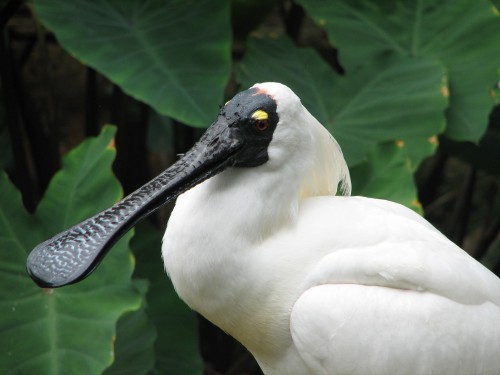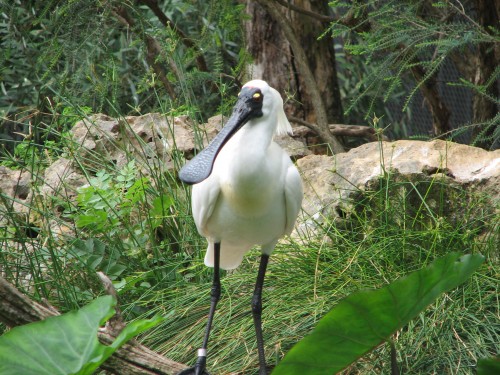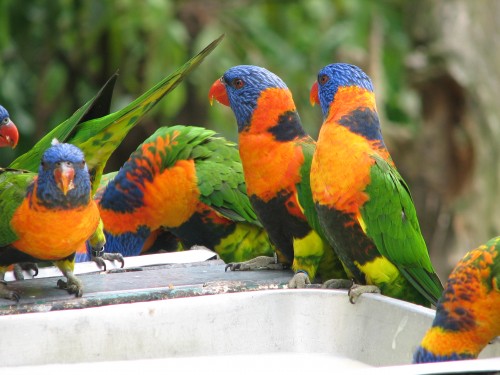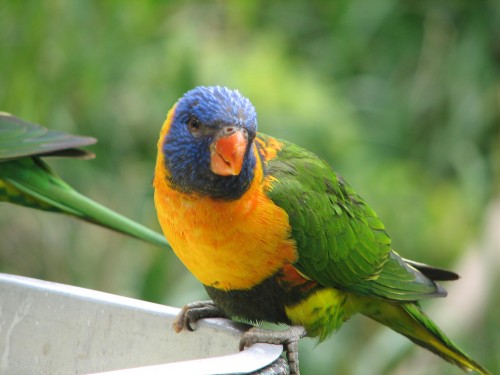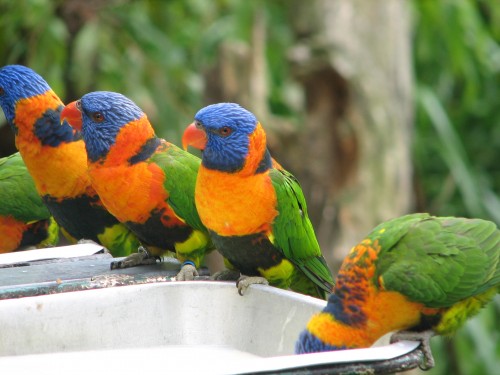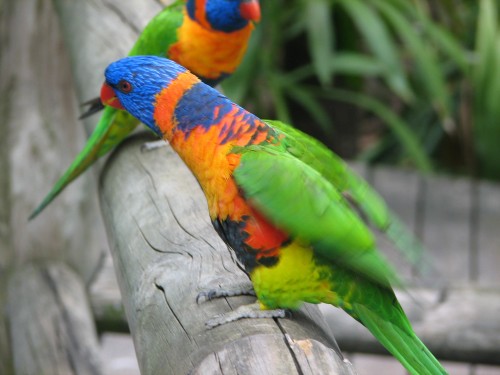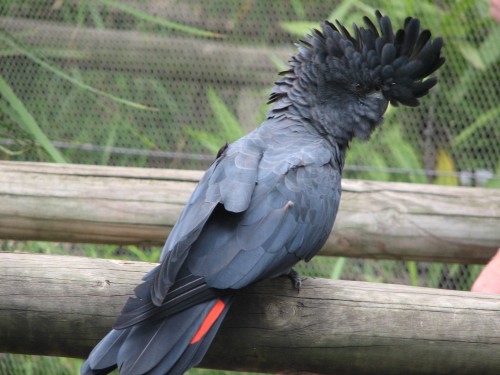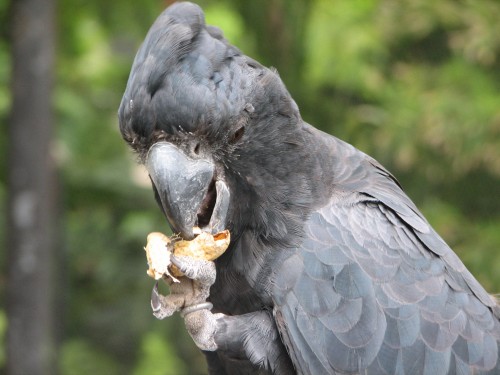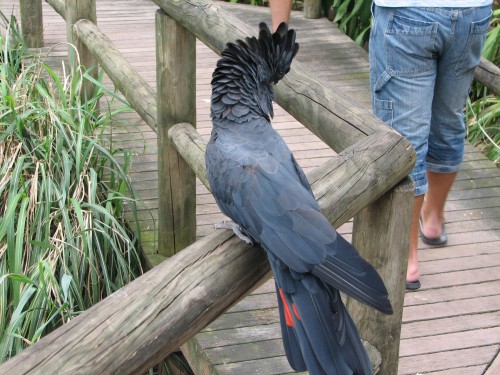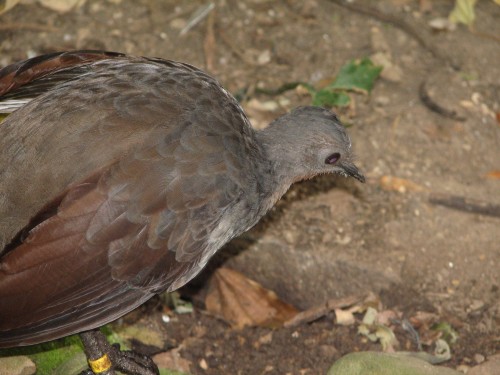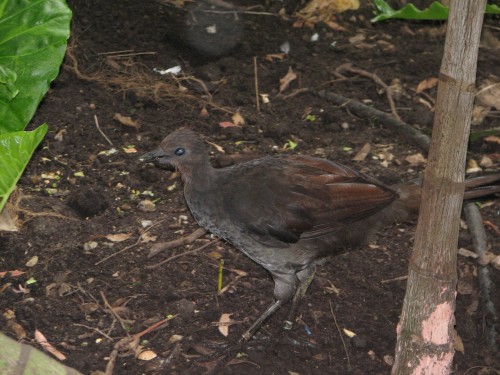Royal Spoonbill
Spoonbills would have to be one of my favourite of all of the wonderful birds we have here in Australia. It was another species, the Yellow-billed Spoonbill that was , in part, responsible for me becoming a birder. I was fascinated to see one feeding in the rock pools of Chambers Gorge in the Flinders Ranges. This was in the mid 1970s. Because it is in the harsh, arid far north of South Australia, this gorge only has water intermittently.
I didn’t have a far to travel to see the bird shown in today’s photo, a Royal Spoonbill. It was taken in one of the walk through aviaries in the Adelaide Zoo, a mere hour’s drive from my home.
Feeding time at the zoo
I am quite familiar with the Rainbow Lorikeets we have here in South Australia. They are also found in many parts of the eastern states. For example, the noise of roosting flocks of lorikeets in the trees in the street where my son lives in Artarmon on the North Shore of Sydney can be quite deafening at dusk. From time to time we have small flocks settle in the trees on our five acre block, but more often we see and hear them darting across the house at speed. In my experience, numbers can vary from a few – perhaps two or three – through to many dozens – or more.
A distinct race of the Rainbow Lorikeet is the Red-collared Lorikeet which I have featured in today’s photos. They are just as colourful and just as gregarious; their noise when feeding can be deafening. On a recent visit to Adelaide Zoo I timed my visit to the walk through aviary perfectly, more by accident than design, I might add. The keeper had just fed the birds in this aviary and the lorikeets were having a feast – and letting everyone know about it. Their feeding frenzy made it easy to get some great photos.
Red-collared Lorikeets are found across the northern parts of Australia.
Further reading:
Red-tailed Black-cockatoos
The Red-tailed Black-cockatoo is an impressive bird. Not only is it a spectacular bird when seen flying overhead in a large flock, its colours are intense. When seen up close like this one in a walk through aviary at the Adelaide Zoo, one gets a new appreciation of the size of this species. I was certainly careful to keep my fingers away from that enormous beak – see the photo below to see what I mean!
This is but one of a number of black cockatoos found in various parts of Australia. This one has several races spread over a wide range. Large numbers can be found in central, western and northern parts of Australia, while smaller numbers are found in an isolated and endangered population in south eastern South Australia and western Victoria.
Superb Lyrebird in Adelaide Zoo
Many times here on my birding site I have written about the Adelaide Zoo in South Australia. This is my home zoo and I have been a Life Member for about a decade now. I fully support the wonderful conservation work in which they are so successful.
One the features of this zoo is the excellent collection of birds, both Australian and non-Australian. Several walk-through aviaries allow the visitor to get up close to many otherwise shy or elusive species. The Superb Lyrebird is one such species. I’ve only managed to see this species in its natural habitat on a handful of occasions, so to see and photograph one from a distance of a metre or two is a real delight.
The Superb Lyrebird is widespread in the eastern parts of Australia but it is not all that common. In its natural environment it can sometimes be quite elusive. I remember fondly the first time I saw one. One morning before breakfast I walked in the rainforest in northern NSW for about three hours, only to get a three second glimpse of a solitary bird as it scuttled off into the undergrowth. I told the park ranger about my experience later. His reply: “Your sighting is about two seconds longer than most people.”
Mallee Ringneck parrots feeding young
We have a family of 6 to 8 Mallee Ringneck parrots resident in our garden. We see them every day and they love feeding on the flowers of plants like the Eremophila shown in the photo above. They are also partial to our pears – before they are fully ripe. (Last summer we managed to foil them by draping bird netting over the trees. Yes!)
Quite often we have seen several of the parrots sitting at the entrance of a large hollow in one of our trees. We also see them entering and leaving this hollow. We’ve suspected that they have been nesting in this hollow, but we lacked definite proof until earlier this week.
My wife, who runs a small nursery growing Australian native plants (click to visit), was working in the nursery when she noticed a ringneck feeding a young one in the tree near her. So we can only assume that they have recently used the hollow (or another one nearby) to raise a family.
The Mallee Ringneck is a race of the Australian Ringneck.
